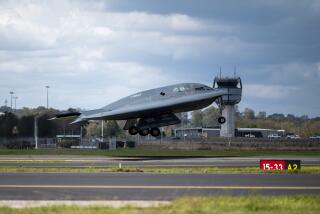Al Qaeda in the Arabian Peninsula at center of U.S. cross hairs
WASHINGTON — U.S. intelligence officials long have said that Al Qaeda’s affiliate in Yemen had eclipsed the global terrorism network’s core leadership in Pakistan as the chief threat to American facilities and interests.
Recent events, including the Obama administration’s decision to temporarily shutter more than two dozen diplomatic missions around the globe, have brought that claim into stark relief.
In the latest developments Wednesday, a suspected U.S. drone strike killed seven more alleged Al Qaeda militants traveling in two cars in southern Yemen, the fifth such attack in less than two weeks. And Yemen’s government announced that it had foiled an ambitious plot to blow up oil and gas pipelines and to seize shipping ports that are crucial to the country’s economy.
Al Qaeda in the Arabian Peninsula, or AQAP, had planned to target the southern cities of Mukalla and Bawzeer, then send militants disguised as Yemeni troops to attack two strategic oil ports on the Arabian peninsula, Yemeni officials said. Other militants would try to sabotage oil pipelines and occupy government buildings.
U.S. officials said another scheme was the basis for the embassy closures. Hints of an imminent attack against the West were derived from intercepted communications between Al Qaeda leader Ayman Zawahiri in Pakistan and AQAP’s leader, Nasser Wuhayshi, a former aide to Osama bin Laden. So far, no attack has occurred.
Both operations fit a pattern for a terrorist group that has shown ingenuity but achieved limited success. Even its best-known failures — specially designed and cleverly hidden bombs intended to take down airplanes that either failed to explode or were compromised by spies — keep U.S. counter-terrorism officials awake at night.
“We know that AQAP has the technical capacity to build bombs that made it past airport security,” said Gregory Johnsen, author of “The Last Refuge: Yemen, Al Qaeda, and America’s War in Arabia.” “That is very worrisome.”
Johnsen argues that the drone strikes are driving Yemeni tribesmen into Al Qaeda’s fold. Only a small number of those killed have been senior leaders, he said. Yet it’s clear that AQAP has suffered severe setbacks.
CIA and U.S. military drone strikes hit the group 42 times last year and 17 so far this year, according to Long War Journal, an independent group that tracks the attacks.
A drone strike in 2011 killed Anwar Awlaki, an American-born cleric who U.S. officials say had become an operational leader as well as chief propagandist, plus his 16-year-old American son. A drone strike last year killed Fahd Quso, a key suspect in the bombing of the USS Cole, an American guided missile destroyer, in the Yemeni port of Aden in October 2000.
Over the last 18 months, the airstrikes and a Yemeni army offensive helped drive AQAP fighters from territory they had captured in southern Yemen. A Saudi man who was recruited by British intelligence infiltrated AQAP’s ranks and volunteered as a suicide bomber. He instead gave the CIA a bomb that was designed to slip through airport security, foiling the plot last year.
“So far, we have actually seemed to be keeping them increasingly off balance,” said Barbara Bodine, who served as U.S. ambassador to Yemen from 1997 to 2001. “People are talking as if they have launched a successful attack. What’s really happened is we’ve detected the plots and stopped them.”
Most analysts say AQAP is not nearly as potent as Al Qaeda was when Bin Laden and his top lieutenants were alive.
“AQAP is a very dangerous organization, no question, but is not as formidable as Al Qaeda was when it was intact,” said Daniel Benjamin, a former State Department counter-terrorism coordinator who is now a scholar at Dartmouth University.
“AQAP has the desire and capability for striking the U.S. at home, but it has yet to show the kind of skill and logistical maturity that the core Al Qaeda demonstrated,” Benjamin said.
U.S. counter-terrorism officials worry most about AQAP’s Saudi-born bomb designer, Ibrahim Hassan Asiri.
He built the underwear bomb that Umar Farouk Abdulmutallab tried to set off over Detroit in December 2009. U.S. officials say Asiri also built bombs hidden in printer cartridges that were meant to bring down cargo planes over U.S. cities in 2010. The devices were discovered through a tip from Saudi intelligence.
“There is intelligence that he has unfortunately trained others and there’s a lot of effort to identify those folks,” John Pistole, who heads the Transportation Security Administration, said last month.
There are also efforts to kill them. Asiri remains a top target. And in 2010, a former senior U.S. diplomat said, a drone strike killed a Syrian doctor who was working with Asiri in a scheme to surgically implant explosives in would-be suicide bombers.
Special correspondent Zaid al-Alayaa in Sana, Yemen, contributed to this report.
More to Read
Sign up for Essential California
The most important California stories and recommendations in your inbox every morning.
You may occasionally receive promotional content from the Los Angeles Times.











